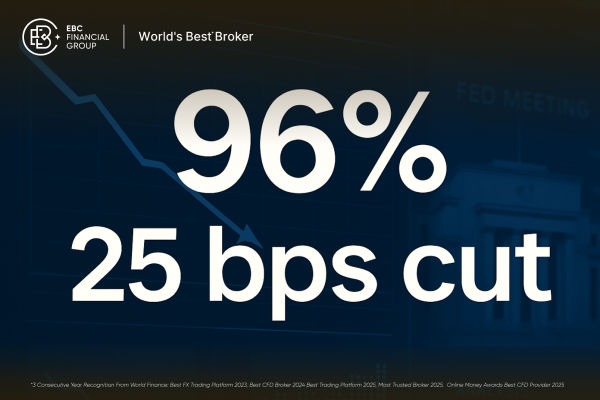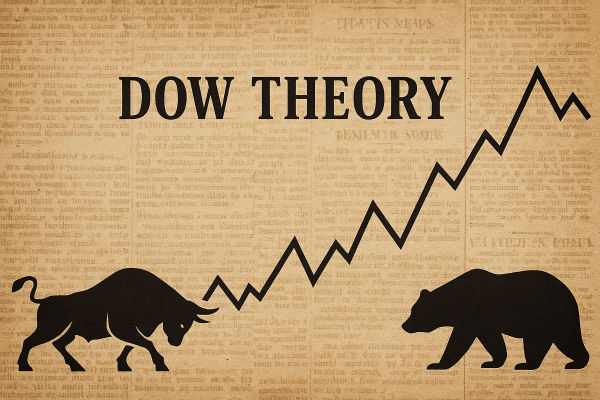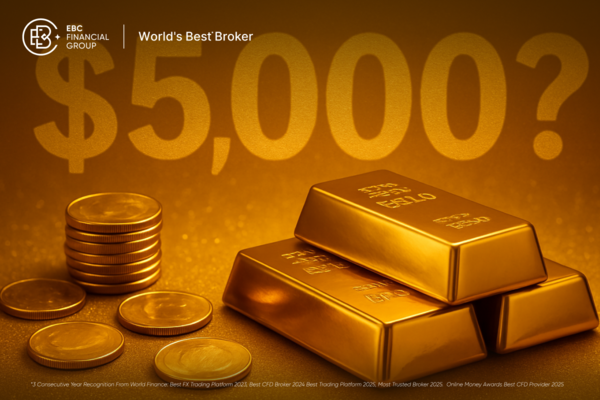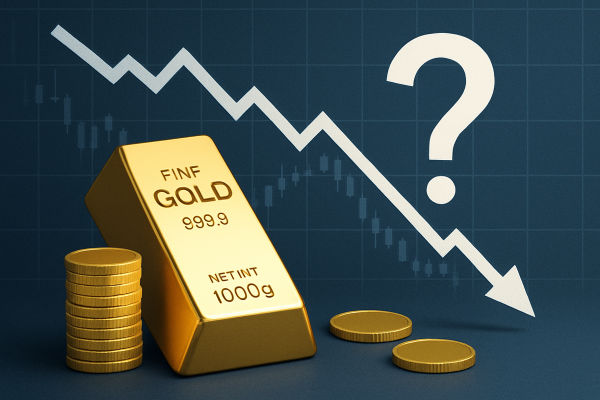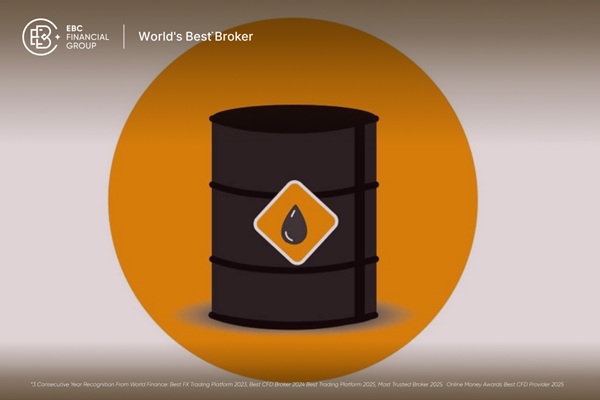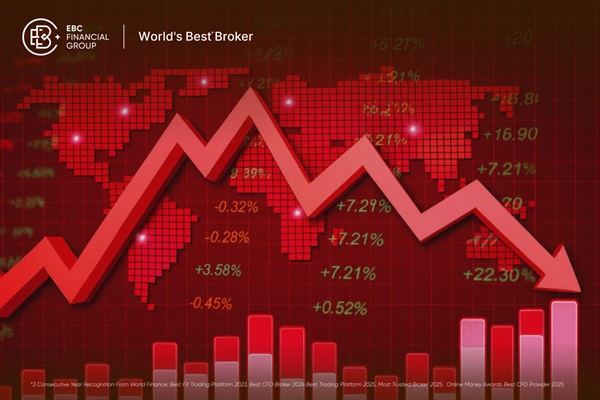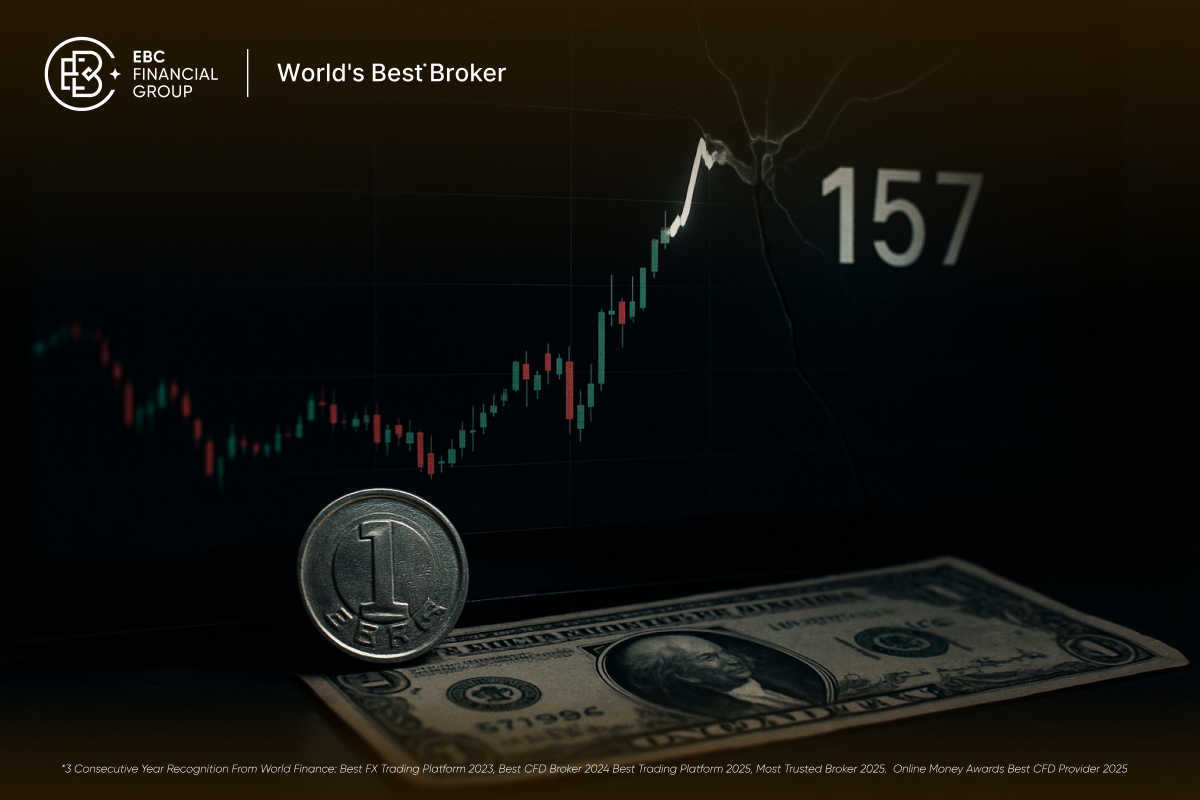Key Takeaways
Gold prices are consolidating just below $4,000 after hitting record highs above $4,300 in October 2025.
Experts expect a retest of $4,000 if U.S. real yields and the dollar weaken further.
Central-bank demand and ETF inflows remain strong, providing structural support for gold.
Short-term fluctuations are expected to continue, yet the medium-term perspective remains optimistic in the face of global unpredictability.
Gold prices are hovering near the key $4,000 mark, sparking fresh debate among traders and investors: will the gold rate increase back to $4,000 in the coming days, or has the rally lost steam?
As reported by Reuters, spot gold traded around $3,983 per ounce on November 5, 2025, easing slightly from last week's high near $4,004. Thus, gold remains in focus as investors seek clarity on whether the next move is a renewed breakout or a consolidation phase. [1]
The short answer is that momentum and macro signals still lean bullish. However, the near-term path could remain volatile as markets weigh real yields, dollar strength, ETF demand, and central-bank activity.
Why Gold Dropped from Its Record High?
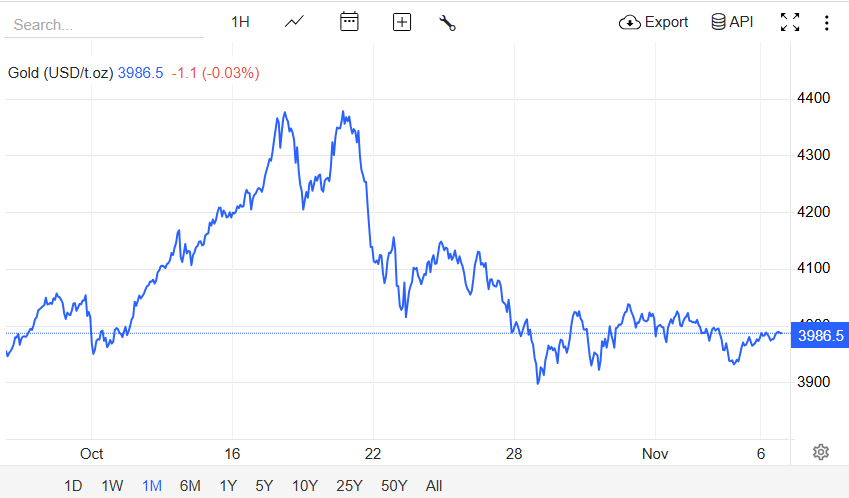
After reaching a record $4,300 per ounce in early October 2025, gold has since eased slightly, trading just below the $4,000 mark. But the pullback has been limited, and experts say the drivers supporting gold's longer-term strength remain intact.
1. Macro Policy Easing Expectations
Markets still expect the Federal Reserve to deliver another rate cut by early 2026. Lower policy rates reduce the opportunity cost of holding gold, which generates no yield but preserves value during periods of uncertainty.
Recent Federal Open Market Committee (FOMC) statements indicate that officials remain cautious but are open to further easing if inflation continues to trend downward. Fed funds futures now price in at least one 25-bp cut in Q1 2026, supporting gold's medium-term momentum.
2. Large ETF Inflows
Global physically-backed gold ETFs added more than 15 tonnes in October, extending the three-month streak of inflows, according to the World Gold Council. Total holdings now stand near US$389 billion, reflecting persistent investor demand. [2]
These inflows have helped cushion prices even when speculative trading activity slows.
3. Real Yields and Dollar Dynamics
While U.S. real 10-year yields edged slightly higher this week, they remain well below their mid-2025 peaks. Every dip in real yields continues to act as a tailwind for gold, and traders remain sensitive to any signs of a weaker dollar.
The Dollar Index (DXY) hovered near 100, up modestly for the week. If the U.S. dollar weakens again, gold could swiftly reclaim levels above $4,000 per ounce.
4. Geopolitical and Risk Shocks Keep Haven Demand Alive
Renewed tensions in the Middle East and slower growth data out of China have reinforced safe-haven flows into precious metals. Central-bank buying, led by China, Turkey, and India, also remains a steady structural source of demand.
Will Gold Rate Increase in Coming Days? Experts Gold Prediction
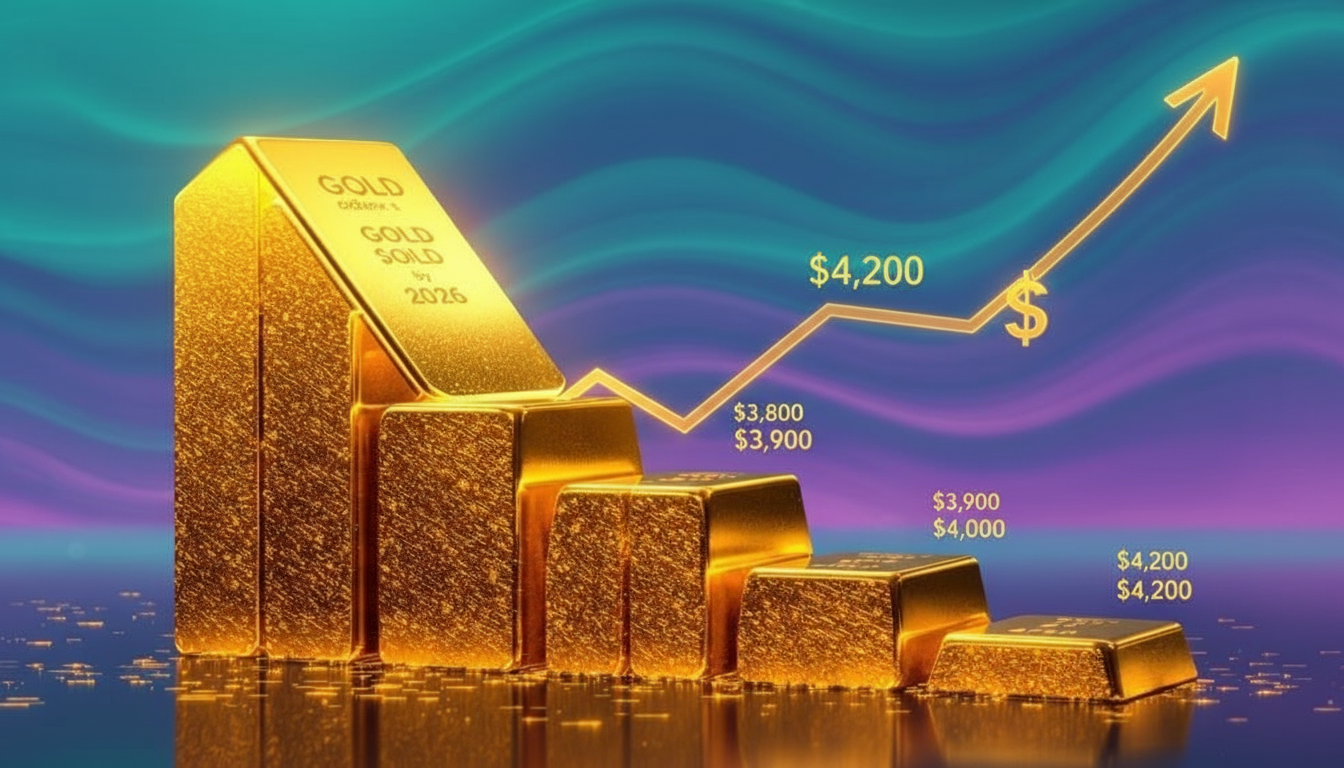
While forecasts differ slightly, the consensus among leading institutions still favours an upward bias, albeit with short-term pullbacks likely.
| Institution |
Updated Outlook / Target |
Timeframe / Notes |
| Goldman Sachs |
Sees $4,000/oz by mid-2026 (research team upgraded forecasts). |
Structural central-bank & ETF demand cited. |
| J.P. Morgan Research |
Forecasts an average of about $3,675/oz by Q4 2025 and sees upside to ~$5,055/oz by Q4 2026. |
Bullish into 2026 with strong central-bank assumptions. |
| UBS |
Raised end-2025 target to about $3,800/oz (and ~$3,900/oz by mid-2026). |
Cautiously bullish; sees dips as buying chances. |
| Market Consensus |
Gold likely to hold above ~$3,900 barring a sharp USD rally |
Based on current macro setup. |
In short: As long as the Fed maintains a dovish bias and the dollar stays contained, gold's structural uptrend remains intact.
Gold's Near-Term Catalysts: What Will Drive the Next Moves
Additionally, if you want to know whether gold will keep rising in the coming days, watch these five high-impact items very closely:
| Factor |
What to Watch |
Why It Matters |
| Real Yields |
10-year TIPS data and Fed commentary |
Lower real yields → more gold upside |
| DXY (Dollar Index) |
Dollar direction after Fed speakers and data |
Strong USD caps gold gains |
| ETF Flows |
Weekly GLD/IAU and WGC ETF flow updates |
Sustained inflows = institutional demand |
| Upcoming Data |
U.S. CPI (for October): Scheduled Nov 13, 2025; Fed speakers: Nov 6–8 |
Could shape near-term sentiment |
| Geopolitical Events |
Escalations in conflict zones |
Support safe-haven bids |
If most of these remain favourable, gold's upside in the near term remains intact.
Risk Scenarios: What Could Halt Gold's Rise in the Coming Days
1) Sudden USD Rebound and Strong U.S. Data.
A sharp dollar rebound after the CPI report on November 13 could pressure gold below $3,950.
2) ETF Outflows and Profit-Taking
If investors lock in profits after the October rally, short-term dips toward $3,850 – $3,900 are possible.
3) Technical Exhaustion
After a steep run, gold is short-term overbought; momentum traders may step back temporarily.
4) Central Bank Selling or a Pause in Purchases
Slower official-sector purchases might remove a key support layer.
Each of these can trigger short-term declines even in an intact medium-term bullish story; that's why traders use tight risk controls.
Practical Gold Trading Strategies for Different Market Participants

For Short-Term Traders (Next Few Days)
Trade the range between $3,950 – $4,020, using tight stops.
Avoid chasing breakouts unless ETF flows and real-yield drops confirm momentum.
For Swing Traders (Days-Weeks)
Buy on dips near support levels and monitor updates on the Fed cut.
Keep stops below $3,880, and target gradual scaling if prices reclaim $4,000.
For Investors (Months)
For those prioritising wealth preservation and hedging against inflation or geopolitical risks, allocating 5–10% to gold and gold-related assets is recommended.
Diversify exposure via physical bullion, ETFs, or mining stocks.
Frequently Asked Questions
Q1: Is Gold a Buy Right Now?
Yes, but with caution. Momentum remains supportive, though short-term volatility has increased. Accumulate gradually rather than chasing highs.
Q2: Will Gold Reach $4,000 Again Soon?
Likely, yes. Many analysts see $4,000 as a key pivot level that could be retested soon if the dollar weakens or real yields soften.
Q3: Are Central Banks Still Buying Gold?
Yes. Q3 2025 central-bank purchases exceeded 220 tonnes, with China, Poland, and India among the top buyers. [3]
Conclusion
In conclusion, gold's rally remains fundamentally supported, even after a mild pullback below $4,000. Falling real yields, steady ETF inflows, and ongoing geopolitical uncertainty point to a constructive setup for the metal in the coming weeks.
That being said, better-than-anticipated U.S. data or a strengthening dollar could lead to short-term drops.
For investors, the message is clear: treat gold as a strategic hedge, not a speculative chase. Unless the Fed turns sharply hawkish or central-bank demand fades, gold's trajectory toward new record highs remains in play.
Disclaimer: This material is for general information purposes only and is not intended as (and should not be considered to be) financial, investment or other advice on which reliance should be placed. No opinion given in the material constitutes a recommendation by EBC or the author that any particular investment, security, transaction or investment strategy is suitable for any specific person.
Sources
[1] https://www.reuters.com/world/india/gold-holds-under-4000-dollar-resilience-fed-rate-cut-outlook-2025-11-04/
[2] https://www.morningstar.com/funds/october-marks-best-ever-month-etf-flows
[3] https://timesofindia.indiatimes.com/business/india-business/betting-big-on-gold-central-banks-continue-to-buy-gold-in-a-big-way-here-is-how-much-rbi-has-bought-this-year/articleshow/125078255.cms










